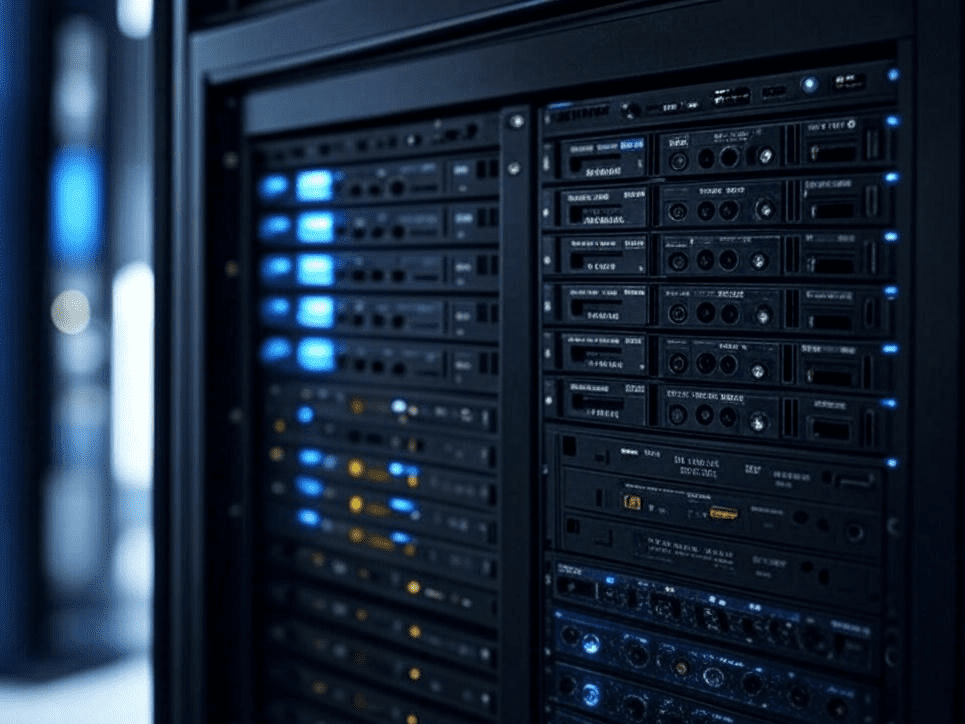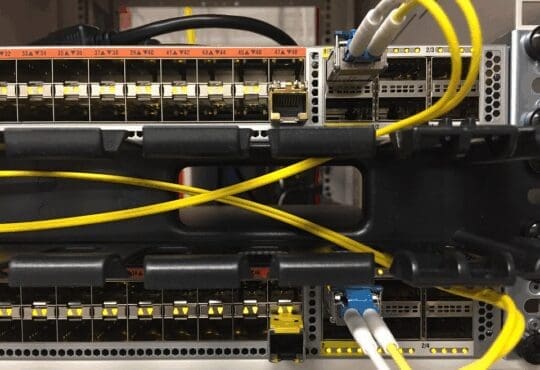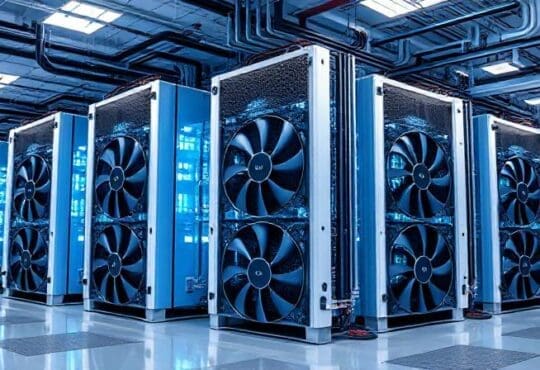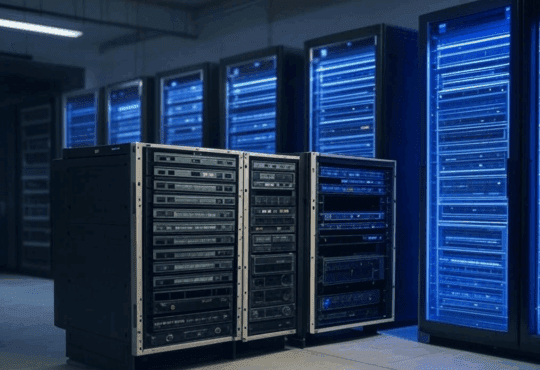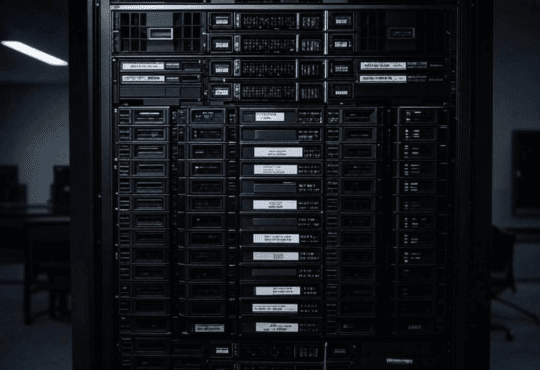Contents
Data centers face skyrocketing demands from AI, cloud computing, and massive data transfers. So, is 100Gb Ethernet overtaking 25Gb Ethernet as the new standard? Let’s dive into retail costs, benefits, and key factors like space, CapEx, OpEx, efficiency, and future-proofing to find out which speed fits your data center best.
What’s Driving the Shift from 25Gb to 100Gb?
25Gb Ethernet hit the scene around 2014, pushed by giants like Google and Microsoft. It offered 2.5 times the bandwidth of 10GbE using a single-lane 25Gbps link. It quickly became a favorite for top-of-rack (ToR) switches in hyperscale setups. Fast forward to 2025, and 100Gb Ethernet is gaining ground. Built on four 25Gbps lanes, it’s now a serious contender for enterprise and cloud environments. But does the cost justify the upgrade?
How Much Will 25Gb Ethernet Cost You?
Retail costs for 25Gb Ethernet are budget-friendly in 2025. A 25GbE SFP28 transceiver retails around $50, according to FS.com. A 48-port 25GbE ToR switch, like the FS N8500-48B6C, costs about $3,000. Cables are affordable too—a 2-meter SFP28 DAC twinaxial copper cable runs at $20, as listed on Amazon. For a 48-server setup, you’re looking at roughly $6,000 total, including switches, transceivers, and cables.
25GbE Retail Costs
Component | Retail Cost (2025) |
|---|---|
25GbE SFP28 Transceiver | $50 |
48-Port 25GbE Switch | $3,000 |
2m SFP28 DAC Cable | $20 |
What’s the Price Tag for 100Gb Ethernet?
100Gb Ethernet costs more upfront, but prices have dropped in 2025. A 100GbE QSFP28 transceiver retails for $150 on FS.com. A 32-port 100GbE switch, such as the FS N8500-32C, costs around $5,000. Cables like a 2-meter QSFP28 DAC are priced at $50, per FiberMall. For a 32-server setup (using fan-out cables for four 25Gbps connections per port), the total cost is about $9,000.
100GbE Retail Costs
Component | Retail Cost (2025) |
|---|---|
100GbE QSFP28 Transceiver | $150 |
32-Port 100GbE Switch | $5,000 |
2m QSFP28 DAC Cable | $50 |
Does Space Efficiency Favor 25Gb or 100Gb?
Space matters in data centers. 25GbE is reasonable for port density. A 1U 25GbE switch with 48 SFP28 ports connects 48 servers at 25Gbps. That’s efficient use of rack space. It also means fewer switches and simpler cabling, which hyperscalers love.
100GbE switches, like a 1U 32-port QSFP28 model, offer fewer ports but higher bandwidth per port. Using fan-out cables, one 100GbE port splits into four 25GbE links, matching 25GbE’s density while delivering 100Gbps total bandwidth. For high-bandwidth tasks like AI clusters, 100GbE can be more space-efficient by reducing the need for multiple switches. With modern software and protocols you can sslto run multiple types of traffic over these higher bandwidth layer 1 connections, thus consolidating the number of ports down further.
CapEx vs. OpEx: Where’s the Real Cost?
Capital expenses (CapEx) lean toward 25GbE. A 48-server 25GbE setup costs $6,000, as we calculated. 100GbE, at $9,000 for 32 servers, is pricier upfront. But fan-out cables mean you need fewer 100GbE switches, which can balance costs over time.
Operational expenses (OpEx) tell a different story. 100GbE’s four-lane 25Gbps design delivers 4x the bandwidth per port. This cuts the number of switches and cables needed long-term. A 100GbE switch uses about 300W, while a 25GbE switch can use around 200W. But with fewer 100GbE switches, you could save 20% on power and cooling costs yearly, reducing OpEx significantly.
Is Efficiency Better with 100Gb Ethernet?
Efficiency isn’t just power—it’s throughput per dollar. 25GbE gives 2.5x the bandwidth of 10GbE at a low cost. It’s perfect for smaller setups. But 100GbE’s 4x25Gbps lanes offer 4x the bandwidth per port. For high-performance workloads like AI training, this matters. A 100GbE link can reduce AI model training time by 30% compared to 25GbE, thanks to fewer bottlenecks.
Are You Future-Proofing with 100Gb?
Future-proofing is critical in 2025. 25GbE meets today’s enterprise needs but struggles with scalability. Upgrading to 100GbE or higher means replacing transceivers and cables, as 25GbE isn’t compatible with 100GbE, although the opposite can be true.
100GbE offers a smoother path. A 100GbE switch today can use fan-out cables for 25GbE and scale to 400GbE later with QSFP-DD modules. This makes 100GbE ideal for AI, 5G, or cloud-native apps. NVIDIA’s SmartNICs, supporting 100Gbps, shows 100GbE’s readiness for the future QSFPTEK.
So, Which Should You Choose?
Is 100Gb Ethernet the new 25Gb? Not quite, but it’s close. 25GbE is still the go-to for budget-conscious setups needing density and low CapEx. But 100GbE’s bandwidth, OpEx savings, and future-proofing make it the winner for high-performance data centers. If you’re handling AI, 5G, or cloud workloads, 100GbE is your best bet. Plan for the future and don’t get left behind.


